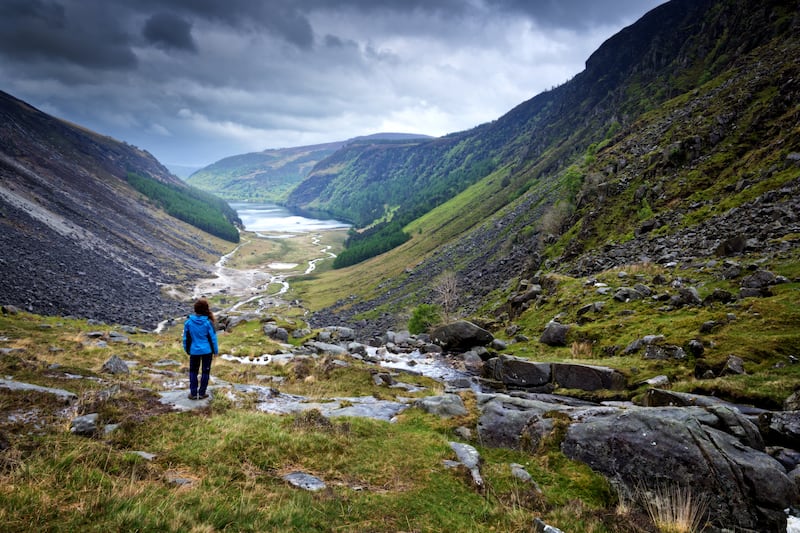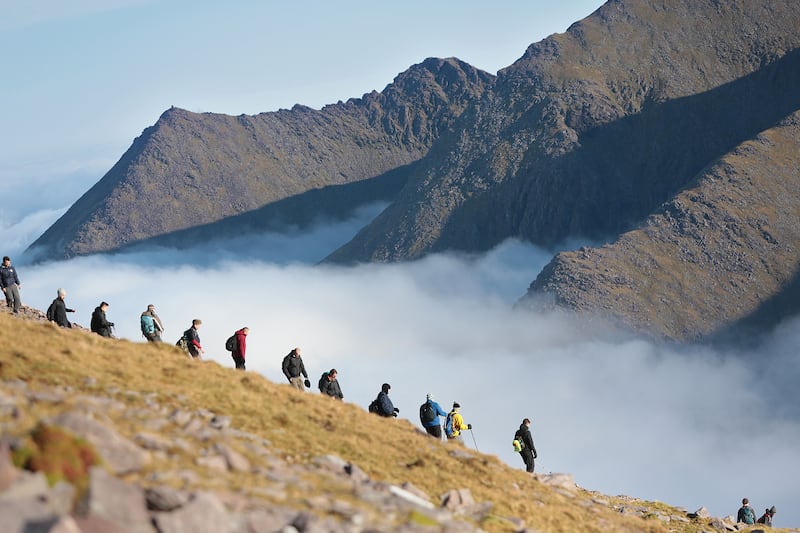There are many myths and even more truths I can tell you about Wicklow. Some people, for example, believe that the county have never won an All-Ireland. Except they have. Bray Emmets won the football final in 1902, but because they were representing Dublin as county champions the honour was attributed to the Metropolitans.
That might be handy information for a table quiz someday, and don’t forget to mention that the Emmets team included players from Wicklow town and Arklow town, just as Greystones RFC do now. For a bonus point tell them you also know the Garden County’s only All-Star footballer and his name is Kevin O’Brien.
It’s also true that following relegation to Division Four earlier this year, Wicklow football is facing into another long uphill battle not too unlike the geography of the place – the 51,000-acre Wicklow Mountains National Park is not just the largest of our six national parks but the largest continuous upland area in the country. And with the odd exception of sheep and cyclists and Sika deer it is largely uninhabited too.
When St Kevin went looking for his last retreat he chose wisely in Glendalough, an old glacial valley smack bang in the middle of it all. It’s some distance from even the Church of Mantan itself and there’s still no easy way in or out. A suitable site too for the unveiling last week of Oisín McConville as the new Wicklow senior football manager.
READ MORE
“Not exactly on my doorstep,” McConville cheerfully acknowledged, when asked about the long journey down from the archdiocese of Armagh. He agreed the immediate priority was promotion and a crack at the Tailteann Cup, its predecessor the Tommy Murphy Cup being one of the last pieces of silverware won by Wicklow, back in 2007, when Mick O’Dwyer was making the long journey up from Waterville.
“You’re looking out for physicality, body shape and composition, how they perform in games under pressure,” McConville said when asked about the sort of Wicklow footballer he has in mind. True, he won’t have the catchment area of neighbouring Co Dublin (with somewhere over two million people versus Wicklow’s 155,258) but McConville can take some comfort in the fact that from these mountains to the sea is the most perfectly natural training ground outside of The Kingdom itself.
Even the creaky cyclist manqué within appreciates the unique meandering of the original Wicklow Military Road, which since the 1798 Rebellion has been running the 58km from Rathfarnham in Dublin, beginning with the first notable ascent up towards Killakee and then slowly stretching along the mountain roof from the Sally Gap to Laragh, and down as far as the last of the old barracks at Aghavannagh.
At the peak of it all is the bulking Lugnaquilla, which at 925m is the highest mountain in the country outside of Kerry, so plenty of stamina work to be found there, or indeed recovery with the ions from the highest waterfall in the country at Powerscourt, or by the salty waters at Brittas Bay.

McConville can also take inspiration from some of our Olympic gold medal winners who were either born or trained around here. You know who they are: Katie Taylor’s gym may be locked up now, but Bray will always be her home; and there’s a nice plaque on the wall of Hillview house in Arklow marking the birthplace of Ronnie Delany, whose fondest childhood memories include running along the Avoca river which flowed by his house.
Though born in Cumberland, Arklow is also where another Olympic gold medallist, Peter O’Connor, discovered his athletic prowess, learning to hop, skip and jump from the front door of the gate lodge at Ashtown Lane to the edge of the path beyond.
And Wicklow is home to two famous cycling monuments, just not the races. Early on the Wicklow Military Road, just off the turn to Aurora at Glencree, there’s a smaller granite boulder, half-carved with the inscription: Liam Horner, Olympic Cyclist, “the last prime”.
Horner often trained around these same roads, and in 1967, while still working as a carpenter, became the first amateur to win a major race outside of Ireland with his victory in the Manx International, and he later rode in both the 1968 and 1972 Olympics.
Further on up at Glenmalure there’s another granite boulder with the inscription: In Memory of Shay Elliott, International Racing Cyclist, erected by his family and friends, Bray Wheelers Club, 1971. That was the year he died, aged 36, always remembered as the first English-speaking rider to wear the yellow jersey in the Tour de France, plus the Giro and the Vuelta, and for single-handedly blazing the trail for Irish professional cycling.

Although born in Dublin, Elliott is far more associated with Wicklow, later living at Kilmacanogue, with one of his favourite training routes being the climb to Glenmalure then down into Drumgoff, often repeated in quick succession – it was popular with later Irish riders too including Stephen Roche.
McConville’s task of uplifting Wicklow football will be helped by the new €300,000 annual sponsorship, for the next five years, courtesy of Echelon Data Centres and construction firm Beakonshaw, though other challenges remain.
Over 200 years on that same Wicklow Military Road remains the only north-south road through the centre of the county, the side arms acting as primary routes. It’s not exactly Himalayan territory but at times can feel that way. There are several warnings signs of the road being impassable in winter (and sometimes in the summer, at least for cyclists, when Wicklow County Council play a game of risk with the lethally dangerous method of road improvement known as “loose chippings”).
The challenge is access to training. Given the football strongholds east and west of the county, it’s a natural divide not easily navigated, including coming to and from the GAA Centre of Excellence just outside of Rathdrum, or indeed Aughrim on match days, because it’s not just referees who get lost up there.
Back in the summer of 1799, dismayed at the inaccessibility of the Wicklow Mountains so close to the border with south Co Dublin, Lieutenant Charles Cornwallis ordered preliminary survey work on the new Military Road, the main intention being to serve the British army in its search for rebels and quasi-military groups still lawless and marauding in the aftermath of 1798.
What the road was never intended to serve were Wicklow footballers trying to cross the great divide for intercounty training purposes. Truth is McConville has made no promise to move mountains, although if he can manage that he might just reawaken a sleeping giant of Gaelic football.

















